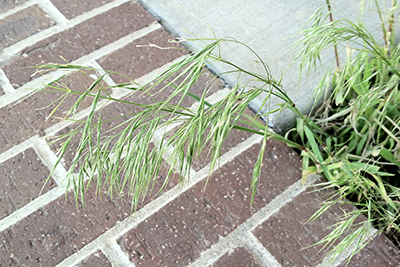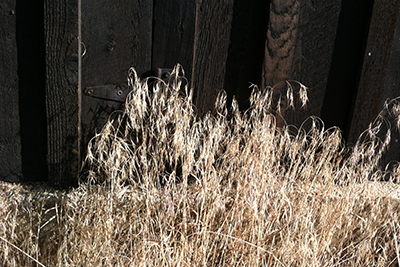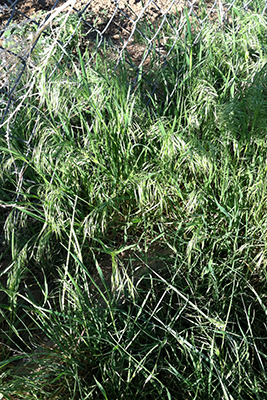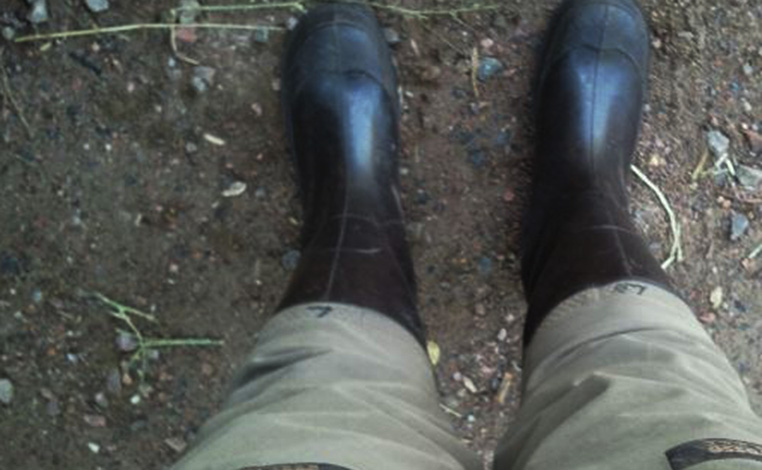Cheatgrass aka Downy brome
Bromus tectorum
Keys to Identification
- Has reddish or purple drooping awns
- One of the first plants to green up in the spring
Family
Poaceae – Grass family
Other Names
Downy chess, downy bromegrass, slender chess, drooping chess, junegrass, and bronco-grass
USDA Code
BRTE
Legal Status
Colorado Noxious Weed List C
Identification
Lifecycle
Winter annual
Growth form
Grass
Flower
Inflorescence is reddish or purple, drooping to one side of the stem. Florets are sharp and awns are straight
Seeds/Fruit
Seeds fall to the ground soon after flowering. Barbs allow seeds to attach to fur, clothing and gear
Leaves
Leaves and sheaths are covered in short, soft hairs
Stems
6-18 inches long
Roots
Shallow, densely fibrous root system. Roots grow throughout the winter and readily use soil moisture early in the spring before other plants germinate
Seedling
Slender green leaves. Emerges in fall and spring. Often the first plants to green-up. May have multiple flushes during rainy summers
Similar Species
Exotics
Natives
Impacts
Agricultural
Invades agricultural fields and range land. Suppressed other grass species and sharp florets harm grazing livestock. Major pest in winter wheat, may reduce yield up to 80 %
Ecological
Degrades native sagebrush and grassland communities, promotes wildfire
Human
May increase the frequency and intensity of fires, often near buildings
Habitat and Distribution
General requirements
Common in arid fire sensitive communities such as scrub, grassland, and some conifer forests
Distribution
Widespread in Colorado and other western states. Originally from Europe
Historical
Likely introduced to the US as a contaminate in crop seed packing material in the late 1800’s and was first found in the US around Denver, Colorado
Biology/Ecology
Life cycle
Germinates in the fall, overwinters, matures and produces seed by May or June
Mode of reproduction
Seed
Seed production
May produce up to 80,000,000 seeds per acre
Seed bank
Most seed germinate in the fall after dispersal. May last 2-4 years in the soil
Dispersal
Dispersed by wind, rodent activity, or by seeds clinging to fur or clothing. Also by equipment, seed and contaminated hay
References
Weed Control in Natural Areas in the Western United States. University of California Weed Research and Information Center. Pg 66-67 USDA. (2020). Downy Brome.
USDA. (2019). Downy Brome. USDA NRCS Plant Guide.
Washington State University – http://smallgrains.wsu.edu/weed-resources/common-weed-list/downy-brome/
Invasive.org – https://www.invasive.org/browse/subinfo.cfm?sub=5214
BugwoodWiki – https://wiki.bugwood.org/Bromus_tectorum




